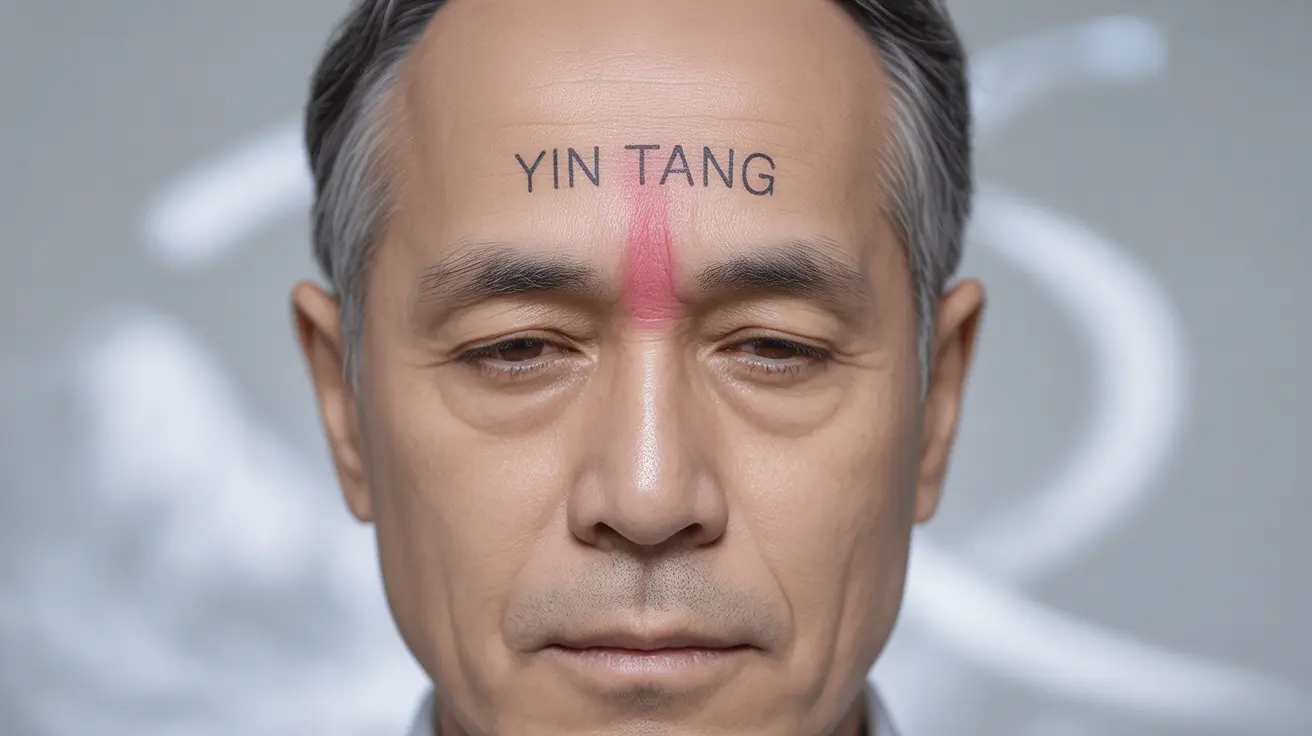The Yin Tang acupuncture point, often called the "third eye point," is one of the most versatile and powerful points in Traditional Chinese Medicine (TCM). Located between the eyebrows, this extraordinary point has been used for centuries to address various physical and emotional conditions, from anxiety to headaches. Understanding how to locate and utilize this point can provide valuable benefits for both mental and physical well-being.
In this comprehensive guide, we'll explore the location, benefits, and proper techniques for stimulating the Yin Tang point, whether through professional acupuncture or self-administered acupressure.
Understanding the Yin Tang Point Location
The Yin Tang point is situated in a highly accessible area of the face, making it easy to identify and work with. It's found directly between the eyebrows, in the slight depression at the bridge of the nose. This location corresponds to what many cultures recognize as the "third eye" center, a significant energy point associated with intuition and mental clarity.
Key Benefits of Yin Tang Acupuncture
Mental and Emotional Benefits
Stimulating the Yin Tang point can have profound effects on mental and emotional well-being. Regular treatment may help:
- Reduce anxiety and stress levels
- Improve mental clarity and focus
- Enhance meditation practices
- Promote emotional balance
- Support better sleep quality
Physical Health Benefits
The Yin Tang point is also known for its positive effects on physical health, particularly in the head and facial region:
- Relief from headaches and migraines
- Reduction in sinus pressure and congestion
- Improved eye strain
- Enhanced facial circulation
- Tension relief in the forehead and temple areas
Professional Treatment vs. Self-Care
While professional acupuncture treatment of the Yin Tang point can provide powerful results, gentle self-administered acupressure can also be beneficial. Professional treatments typically involve the careful insertion of thin needles, while self-care focuses on gentle pressure and circular massage movements.
Safe Practice Guidelines
When working with the Yin Tang point at home, following proper techniques is essential:
- Use clean hands and gentle pressure
- Start with light touch and gradually increase pressure as comfortable
- Limit sessions to 1-3 minutes initially
- Practice 2-3 times daily for optimal results
- Stop if any discomfort occurs
Frequently Asked Questions
Where is the Yin Tang acupuncture point located and how can I find it on my face?
The Yin Tang point is located in the depression between your eyebrows, at the bridge of your nose. You can easily find it by placing your finger between your eyebrows where there's a natural indentation.
What are the main health benefits of stimulating the Yin Tang point through acupuncture or acupressure?
The main benefits include stress reduction, improved sleep quality, relief from headaches and sinus pressure, enhanced mental clarity, and emotional balance. Both acupuncture and acupressure can activate these benefits, though professional acupuncture may provide more intense results.
How does Yin Tang acupuncture help with anxiety, stress, and sleep problems?
Yin Tang acupuncture works by stimulating the parasympathetic nervous system, helping to calm the mind and reduce stress hormones. This point's stimulation promotes the release of natural relaxation chemicals in the body, facilitating better sleep and reducing anxiety.
Can pressing or needling the Yin Tang point relieve headaches and sinus pressure?
Yes, stimulating the Yin Tang point can help relieve headaches and sinus pressure by promoting blood flow to the area and reducing tension. The point's location makes it particularly effective for addressing frontal headaches and sinus-related discomfort.
Is it safe to perform acupressure on the Yin Tang point at home and how often should it be done?
Yes, it's generally safe to perform acupressure on the Yin Tang point at home. Start with 1-3 minute sessions, 2-3 times daily. Use gentle pressure and stop if you experience any discomfort. For best results, maintain consistency in your practice while respecting your body's responses.




